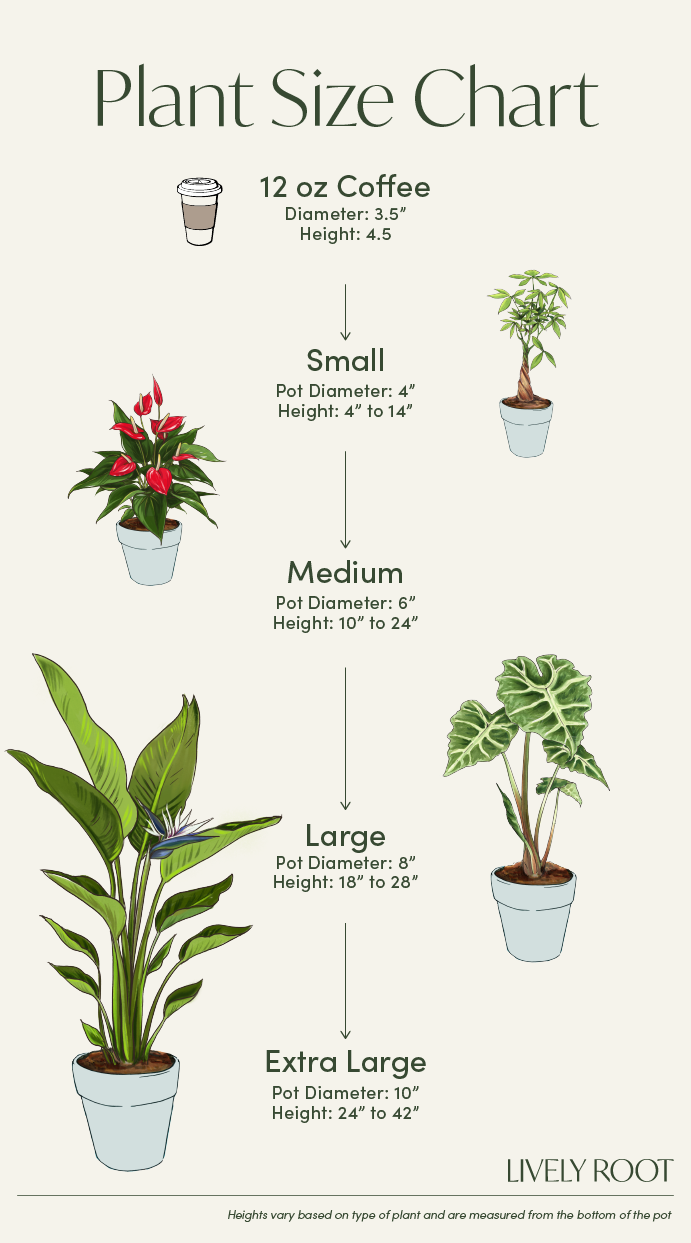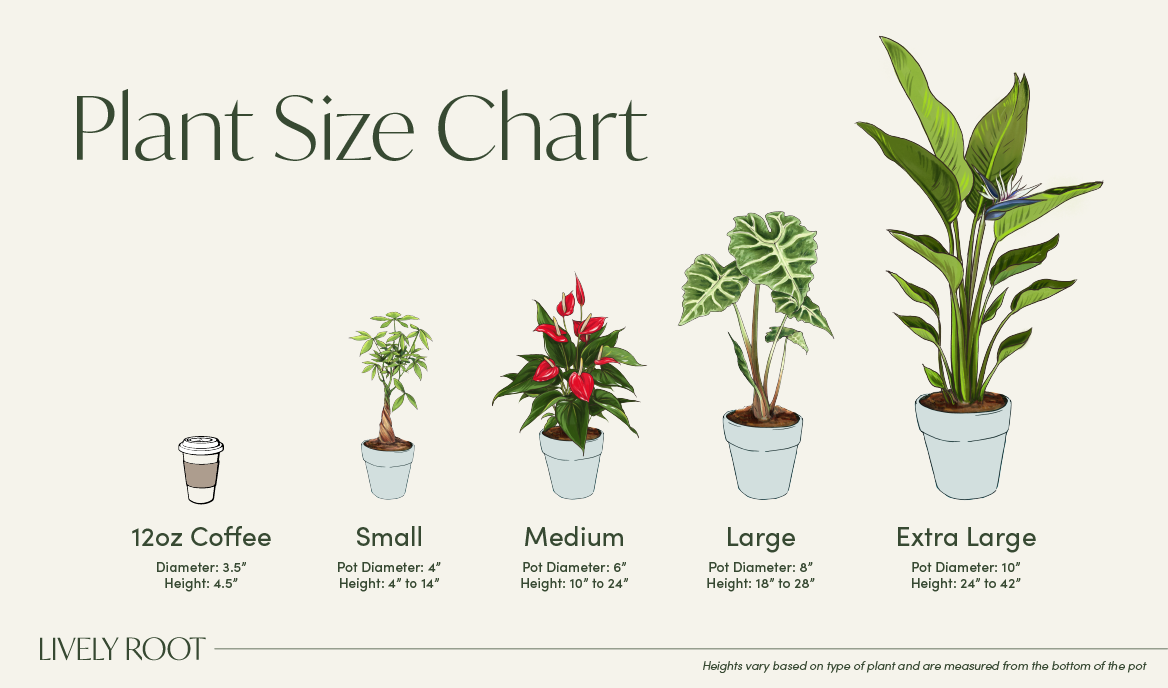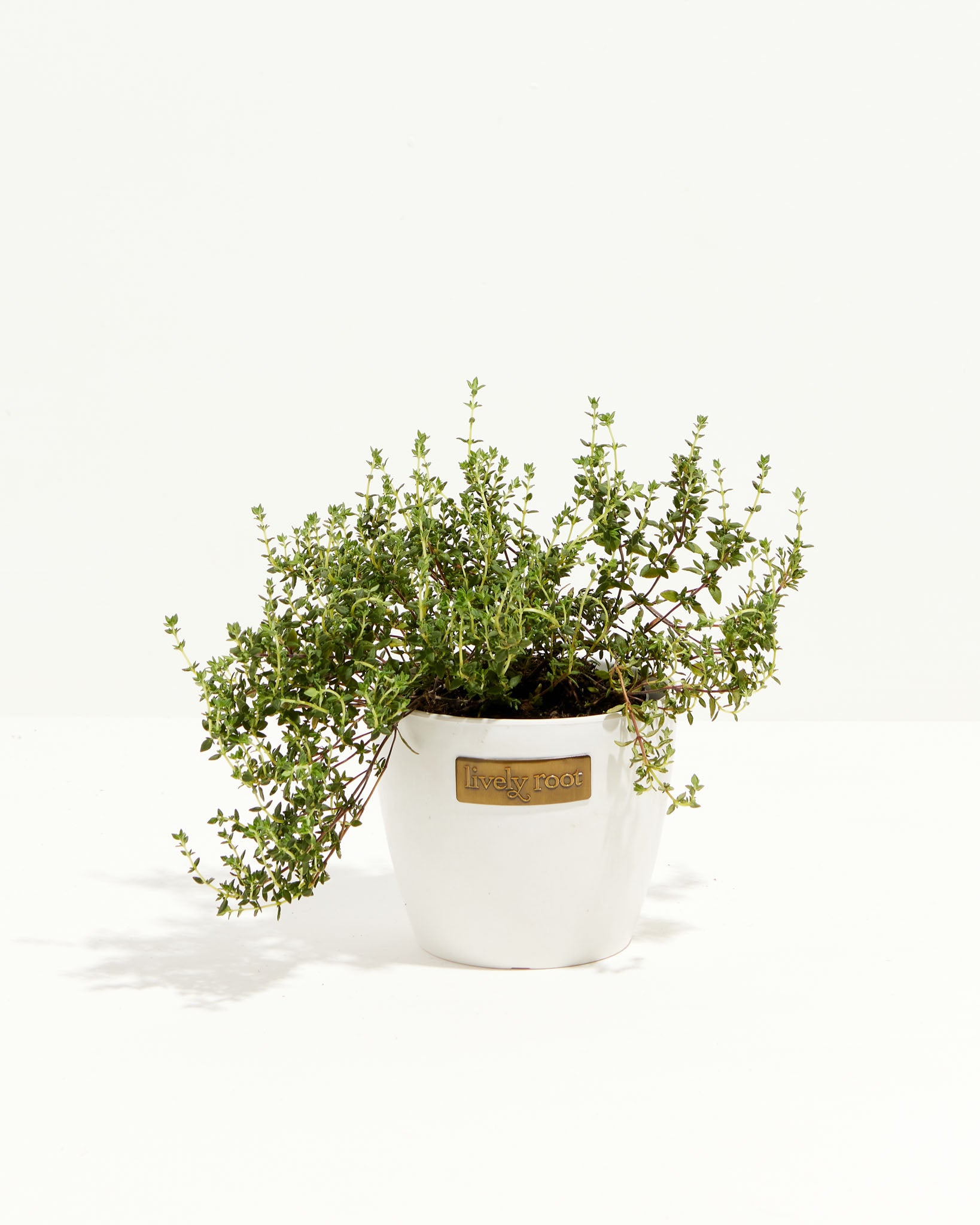

French Thyme Care Guide & Presentation

Plant this herb in full sun (6-8 hours).
Thyme is a drought tolerant plant once it gets established. Water the first several weeks if natural irrigation isn't available. Let it dry between waterings.
Average humidity is good for this plant.
This culinary herb or groundcover prefers moderately dry climates and mild winters in full sun.
The herb likes a more Mediterranean climate.
To transplant into a garden container or the garden bed, water your plant the night before. Dig the hole twice as wide as the grower pot and the same depth as the grower pot (not deeper). Remove the plant and center in the spot. Add rooting hormone around the roots of the plant. Water in the hole and let drain. If you have clay soils, add composted leaves to enhance the soil consistency. Fill around the plant and up to the top of its soil line. Tamp down with your hands to remove any air pockets. Water again around the drip line.
Any time of year, remove any dead, damaged, or diseased stems from the plant. After flowers fade on the plant, sheer back 1-2 inches to shape and promote new growth. This herb may wane in the heat of summer, so trim back, and it will recover in cooler months.
To propagate your French Thyme: Container planting: Water your plant a couple of days before dividing and transplanting. Inspect your plant for overcrowding or if you want to spread more of the love in your garden. If it is root-bound in the pot, remove the plant and tease and pull apart the mass of roots. You can use a sharp, sterilized knife to divide the root mass. Ensure you have several healthy root sections in each division. Divide each clump into its new pot, using a size smaller to compensate for less root mass and deep enough for its roots to grow. Plant in well-draining potting mix amended with rooting hormone. Place the plant at the same level as the previous pot adding soil at the bottom. Water the soil and add more if settling occurs. Set it in medium, indirect sunlight for several weeks to settle in. Check the moisture each day and add misting to keep the soil moist while the roots establish. After 6-8 weeks, roots will begin to develop. You can tug onto the stem to ensure the roots are anchoring well. Once its roots establish, move the container to a sunny spot giving it full sun (6-8 hours). Garden planting: Water your plant a couple of days before dividing and transplanting. Lift the plant out of the ground with a shovel. Lay it gently on the ground with roots in tack. Use a knife to cut through the roots and divide the clump into sections for replanting. Transplant each clump by digging the hole no deeper than the root system and twice as wide. Center the transplant in the hole and add rooting hormone around the roots and water. Fill in around the plant with organic matter mixed with the native soil, careful not to cover it any more than the original plant. Water again well and monitor the soil moisture if it begins to dry.
French Thyme Plant: Overview
French Thyme (Thyme vulgaris), also known as Summer Thyme, is a perennial herb native to the Mediterranean region. It belongs to the mint family, Lamiaceae, and is known for its small, aromatic leaves and pink to lilac flowers that bloom for about 3-4 weeks during the summer. French Thyme thrives in USDA hardy plant zones 5-9, preferring full sun and well-fraining soil. This drought-tolerant plant is relatively easy to care for and can be grown indoors and outdoors.
In French folklore, thyme is associated with courage and protection, often symbolizing bravery and strength. It is also non-toxic and safe for pets, making it an excellent choice for households with animals.
Thyme: Benefits
- It has versatile culinary uses and can be used to enhance various dishes
- It is well known for its antibacterial and antifungal effects and other medicinal properties when used in teas and tinctures
- In aromatherapy, it is used for its soothing fragrance and relaxation properties
- Thyme is also known as a good insect-repellent
- It adds aesthetic appeal to landscaping features like rockeries and gravel gardens.
French Thyme vs. English Thyme
French and English Thyme are both popular culinary herbs but have distinct characteristics. The French Thyme plant, also known as Thymus vulgaris ‘Narrow-Leaf French,’ has a milder flavor and finer leaves, making it ideal for delicate dishes. The English Thyme plant, Thymus vulgaris ‘Broad Leaf English,’ has a stronger, earthier flavor, suitable for heartier dishes.
Other thyme varieties include lemon thyme, which has a citrusy flavor, and creeping thyme, which is often used as ground cover in gardens.
French Thyme: Care Guide
French Thyme care is relatively easy. This drought-tolerant plant thrives with minimal attention, making it perfect for novice and experienced gardeners.
Watering and Light
French Thyme prefers well-draining soil and should be watered sparingly, allowing the soil to dry out between waterings. This flowering plant thrives in full sun, needing at least 6 hours of direct sunlight daily to maintain its robust growth and flavorful leaves.
Temperature and Humidity
French Thyme is hardy in USDA zones 5-9 and can tolerate various temperatures. It prefers a warm climate but can withstand cooler temperatures. This herb doesn’t require high humidity and prefers drier air, making it ideal for indoor environments and outdoor gardens in the suitable climate.
Soil and Repotting
Plant French Thyme in well-draining soil, preferably sandy or loamy, to prevent root rot. When growing in containers, repot this easy-care plant every 2-3 years to refresh the soil and provide more room for growth. Ensure the pot has good drainage to avoid waterlogging.
Maintenance, Propagation, and Pruning
Regular pruning encourages bushier growth and prevents the plant from becoming leggy. Remove any dead or woody stems to keep the plant healthy and productive. French Thyme can be propagated through cuttings or by dividing the plant in early spring. You can also sow French Thyme seeds to grow seedlings and propagate the herb this way.
Common Issues
French Thyme is generally pest-resistant but can occasionally be affected by spider mites or aphids. Overwatering can lead to root rot, so ensure proper drainage and avoid waterlogged soil. Regularly inspect the plant for signs of pests or disease and treat it promptly.
French Thyme: Placement, Companion & Alternative Plants
French Thyme is a versatile herb that can enhance various garden settings and home environments. Its easy-care nature makes it a favorite among gardeners of all levels.
Best Locations & Uses
- Perfect for planting in a kitchen garden, providing fresh thyme for culinary uses right at your fingertips.
- It’s an excellent gift for gardening enthusiasts or anyone who enjoys cooking with fresh herbs.
- Safe for homes with pets, as it’s non-toxic to cats and dogs.
- Thyme is ideal for growing in containers on a porch or balcony, making it easy to manage and move as needed.
- Great for beginners due to its hardy, drought-tolerant nature and minimal care requirements.
Companion Plants
The French Thyme plant pairs well with various herbs and plants, enhancing their growth and aesthetic appeal.
- African Blue Basil (Ocimum Species): African Blue Basil is a sterile hybrid, a cross between camphor basil and dark opal basil, which can be added to salads and cooked dishes.
- Berggarten Sage (Salvia officinalis ‘Berggarten’): Berggarten Sage perfectly complements French Thyme’s growth habits and is also a culinary favorite.
- Provence French Lavender (Lavandula intermedia ‘Provence’): Provence French Lavender is the quintessential icon of any Mediterranean or cottage garden and adds a fragrant touch to your garden while sharing the same sun-loving and drought-tolerant properties.
Alternative Plants
If French Thyme isn’t quite what you’re looking for, consider these similar plants that are also easy to care for.
- Greek Oregano (Origanum vulgare): Another hardy herb, Greek Oregano is perfect for culinary uses and suitable for similar growing conditions.
- Mojito Mint (Mentha x villosa): Mojito Mint is a spearmint native to Cuba with a slightly milder flavor than other spearmint varieties.
- Italian Parsley (Petroselinum crispum): Italian Parsley is a classic garnishing herb with bright green flat leaves, deep flavor, and sweetness.
Order Your Aromatic French Thyme Today From LivelyRoot!
Elevate your herb garden with French Thyme from Lively Root, a versatile and easy-care plant perfect for any gardening enthusiast!
























